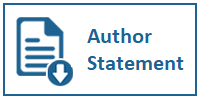AR E-Commerce Experience: Case Study Brand Maybelline at Tokopedia
DOI:
https://doi.org/10.31937/ultimart.v17i1.3488Abstract
Online shopping culture is one of the popular cultures that is currently developing. This popular culture develops along with the rapid development of new media. E-commerce is starting to utilize Augmented Reality as part of its features. Tokopedia launched an AR feature for consumers to try various makeup products. As AR applications in the consumer market are still emerging, studies on AR are insufficient. In this study, the authors analyzed the level of user acceptance of AR implementation in Tokopedia e-commerce by testing the user experience (UX) dimension using a mixed method. Qualitative methods with 5 respondents and quantitative interviews with a system usability scale (SUS) and a user experience questionnaire (UEQ) were conducted on 23 respondents. The results obtained, SUS got a value of 77.61 and UEQ with the value of each category being greater than the impression value. The AR feature has a very positive reception overall, indicating its potential for future use in all industries.
Keywords: augmented reality; user experience; maybelline; tokopedia
Downloads
Published
How to Cite
Issue
Section
License
Authors retain copyright and grant the journal right of first publication with the work simultaneously licensed under a Creative Commons Attribution-ShareAlike International License (CC-BY-SA 4.0) that allows others to share the work with an acknowledgement of the work's authorship and initial publication in this journal.
Authors are able to enter into separate, additional contractual arrangements for the non-exclusive distribution of the journal's published version of the work (e.g., post it to an institutional repository or publish it in a book), with an acknowledgement of its initial publication in this journal.
Copyright without Restrictions
The journal permits the author(s) to hold the copyright without restrictions and will hold distributing rights without limitations.
The submitted papers are assumed to contain no proprietary material unprotected by patent or patent application; responsibility for technical content and for protection of proprietary material rests solely with the author(s) and their organizations and is not the responsibility of the Ultimart: Jurnal Komunikasi Visual or its Editorial Staff. The main (first/corresponding) author is responsible for ensuring that the article has been seen and approved by all the other authors. It is the responsibility of the author to obtain all necessary copyright release permissions for the use of any copyrighted materials in the manuscript prior to the submission.















